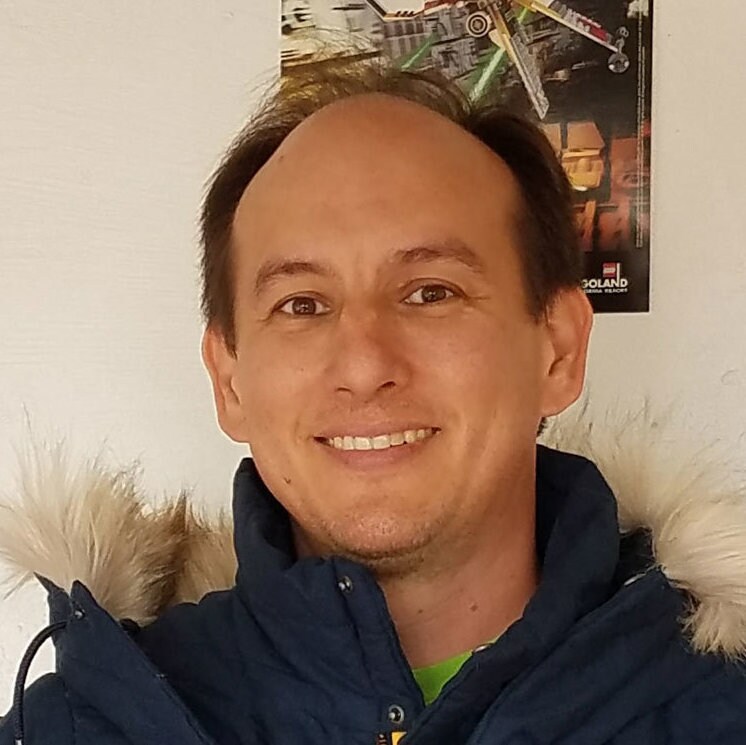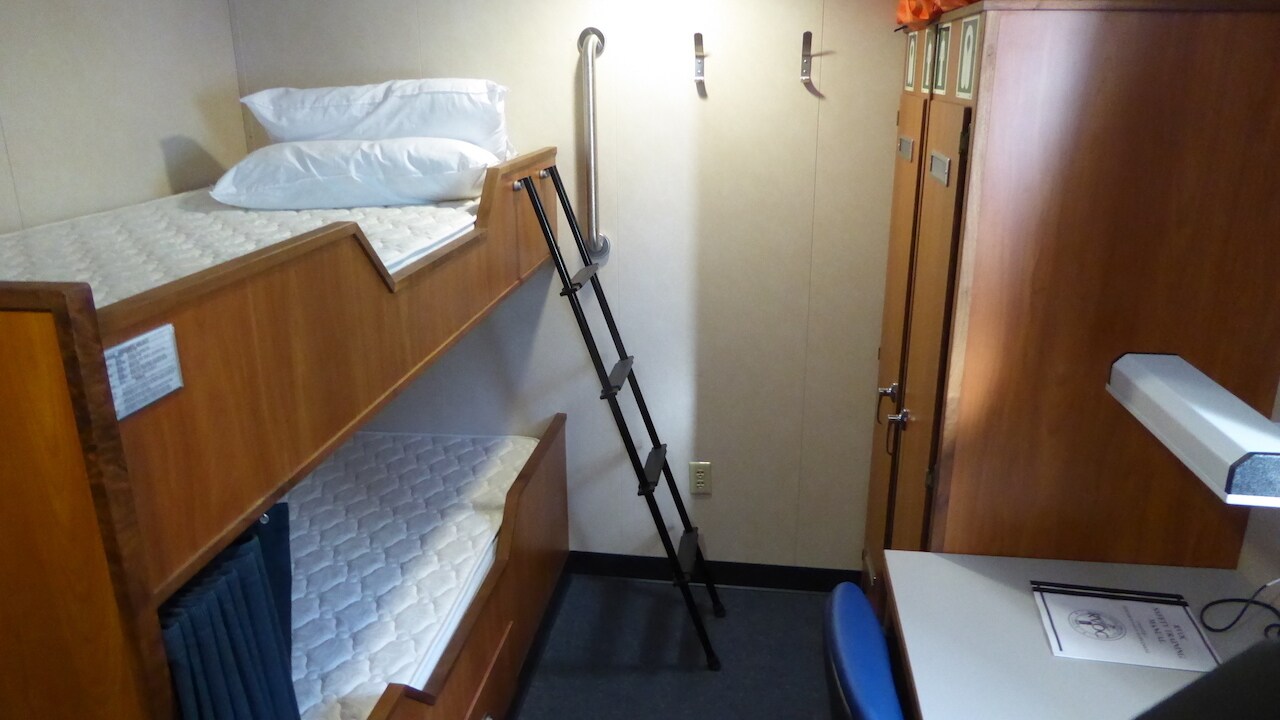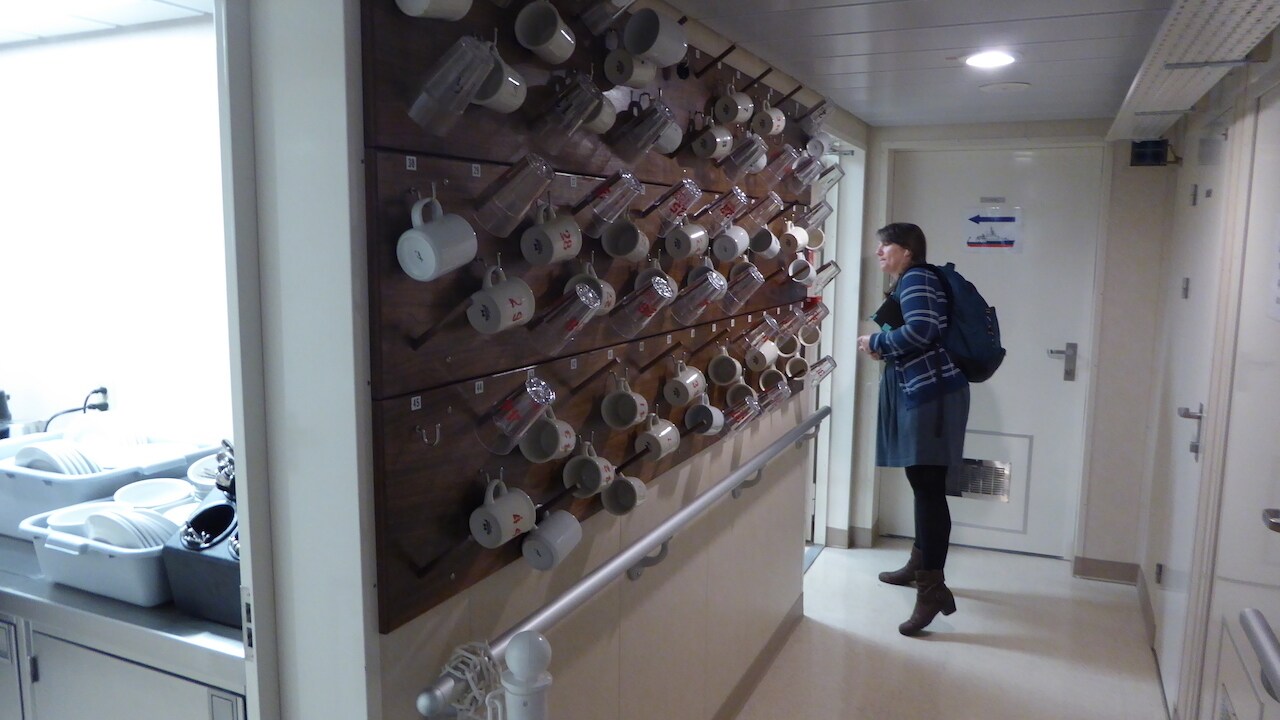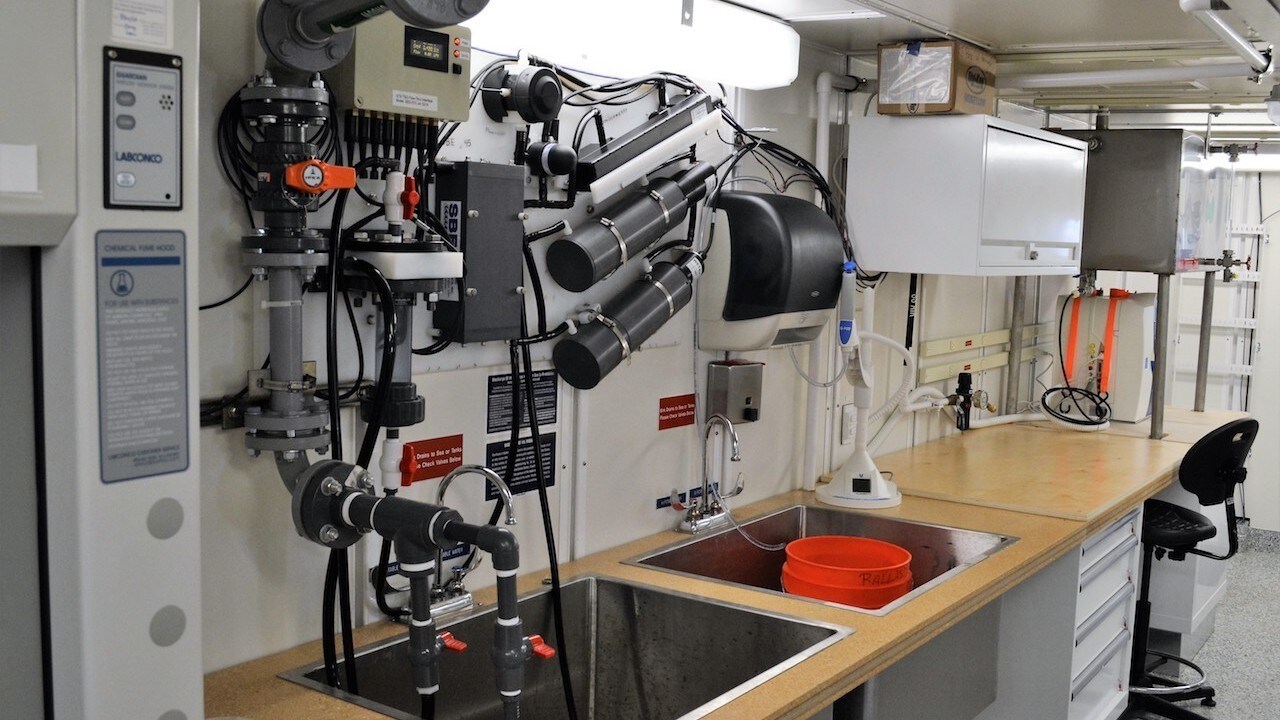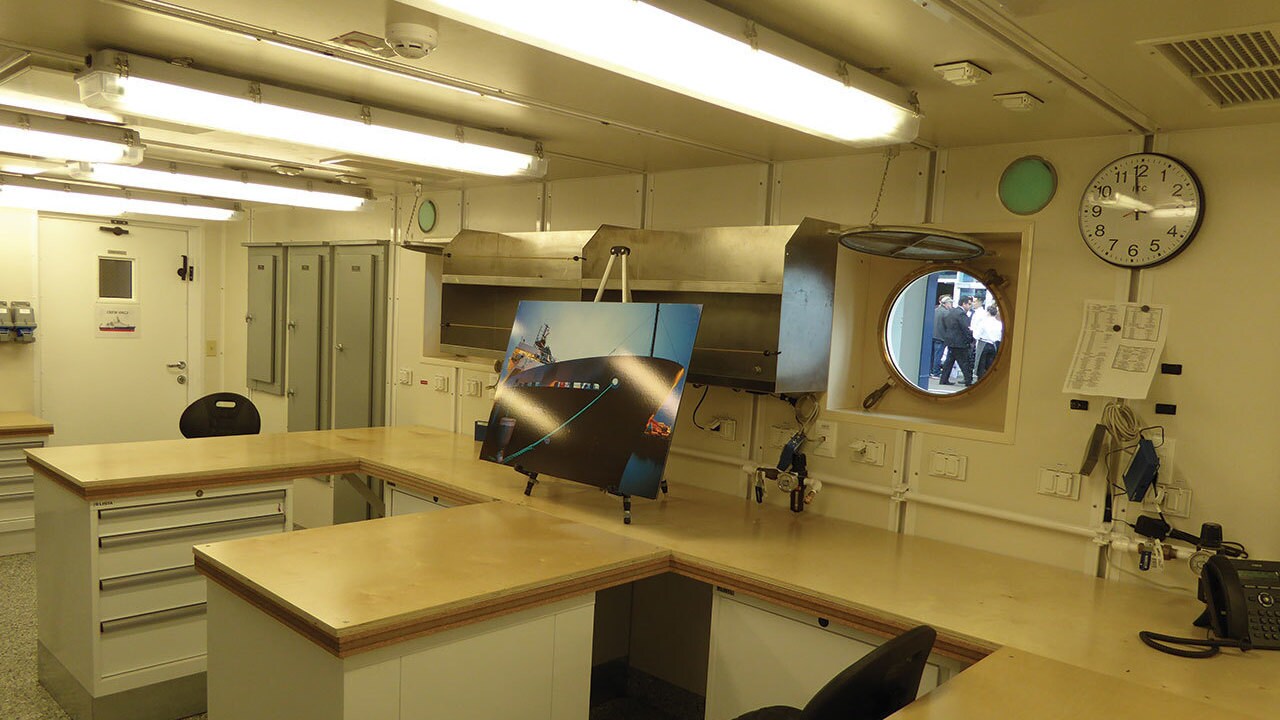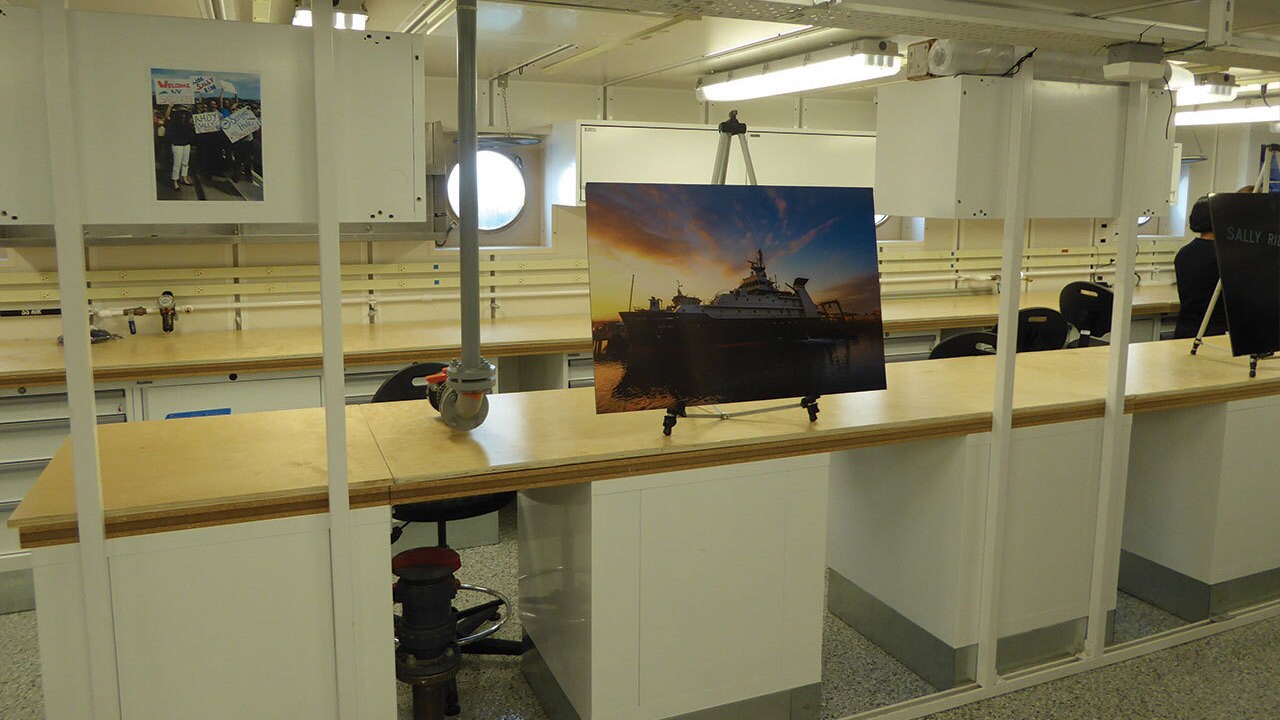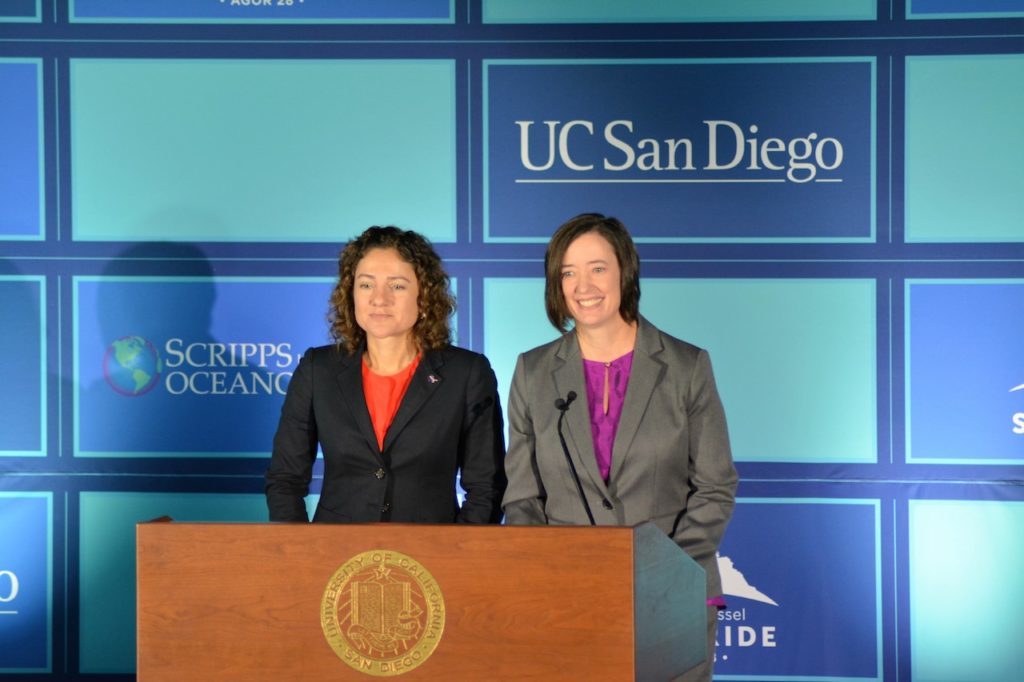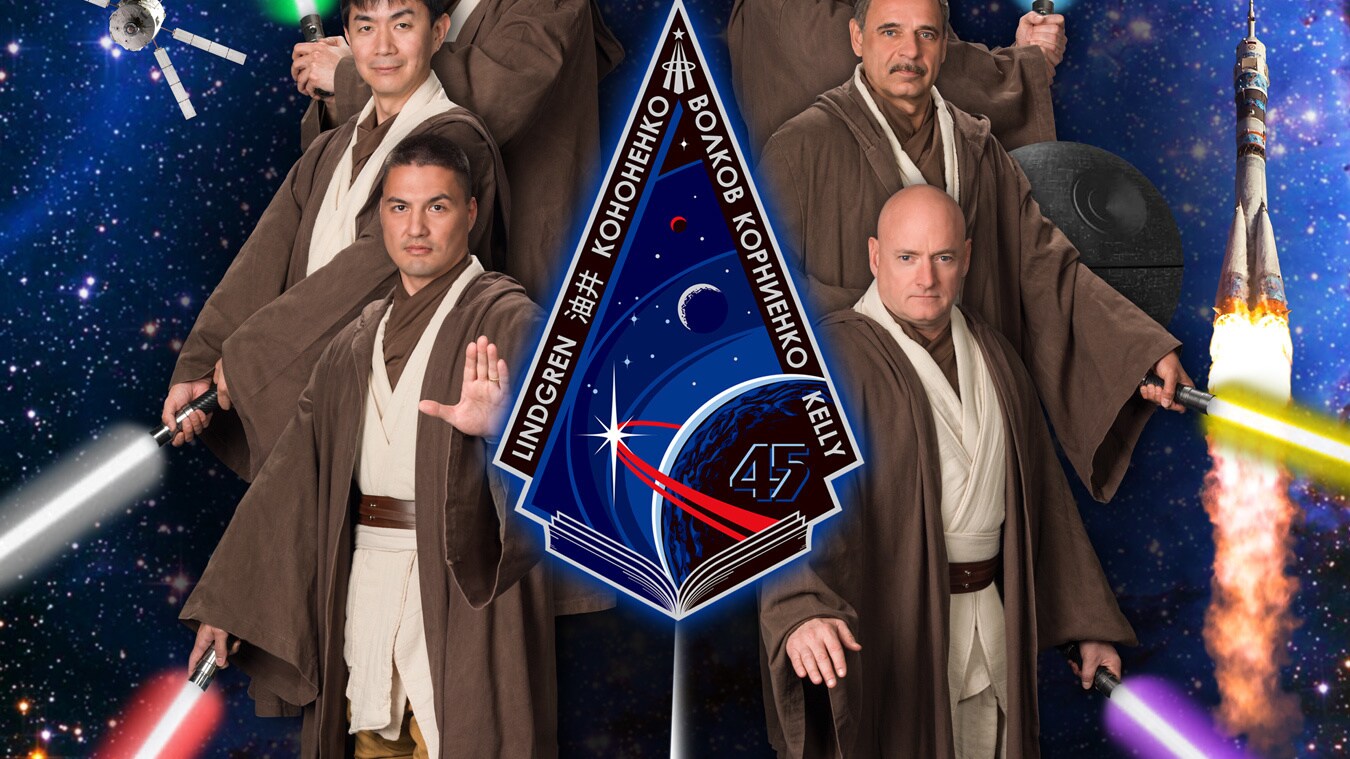It may not be a battle station, but recently, America just launched a fully operational research vessel, and it is named for a real-life spacefarer, Sally Ride, the first American woman in space. Much like a starship, the R/V Sally Ride is outfitted with sophisticated equipment for scanning and charting its surroundings, and can be used to launch probes -- not into the depths of space to search for Rebel activity, but the depths of the seas to study earth, ocean, and atmospheric processes. Whether it’s journeying to the watery planet core of Naboo, or braving the currents of Kamino, or diving in the reefs of Mon Cala and jetting about the shallows on Scarif, the galaxy far, far away is full of wonders to inspire oceanographic discovery, and many of the research scientists and ship’s crew of the R/V Sally Ride draw on their love of Star Wars as part of their path leading them to explore the seas on our planet in order to help solve some of our world’s most pressing challenges, from climate change to global food supply.
All
- Andor
- Rogue One
- Series
- Films
- Disney+
- Games + Apps
- Books + Comics
- Merchandise
- LEGO Star Wars: Rebuild the Galaxy
- Visions
- The Mandalorian
- Ahsoka
- Skeleton Crew
- The Acolyte
- Obi-Wan Kenobi
- The Book of Boba Fett
- The Bad Batch
- The Clone Wars
- Interviews
- Collecting
- Creativity
- Disney Parks
- Events
- Fans + Community
- LEGO Star Wars
- Lucasfilm
- Quizzes + Polls
- Recipes
- Star Wars Rebels
- Star Wars Celebration
- The High Republic
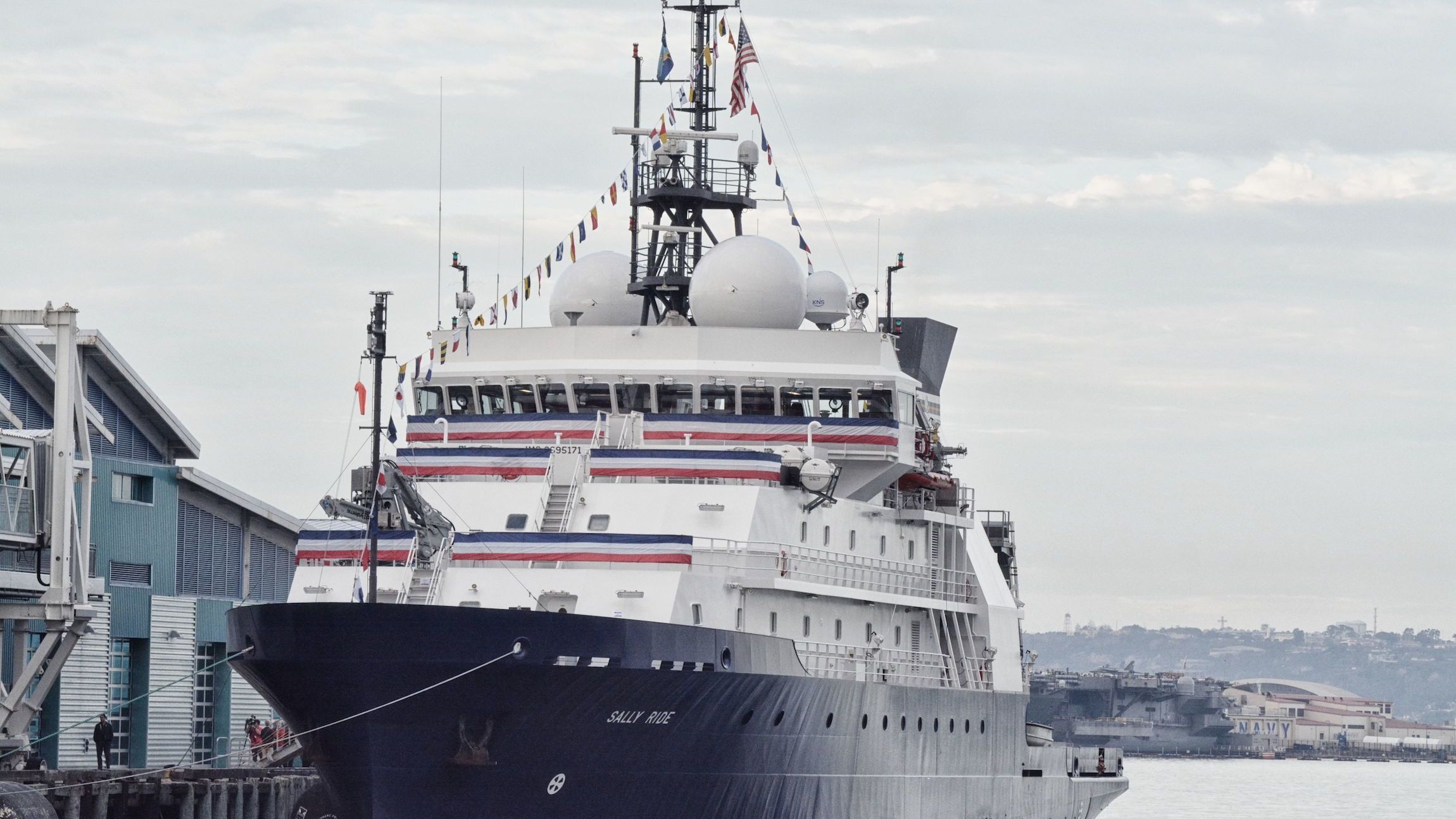
Exploring an Underwater Galaxy: How the R/V Sally Ride Crew Draws Inspiration from Star Wars
Meet the Star Wars-fan scientists and crew shepherding an innovative new research vessel.
Owned by the US Navy and operated by the Scripps Institution of Oceanography at UC San Diego, the state-of-the-art ship R/V Sally Ride was commissioned on October 28, 2016, in San Diego, California, and StarWars.com was on hand to meet with the researchers and crew who will be serving aboard this technological marvel designed for scientific research. Also at the commissioning ceremony were two NASA astronauts and SIO alumnae, Jessica Meir and Megan McArthur, who came out to highlight the importance of both this new research vessel and legacy of its namesake, the late Sally Ride who was both an astronaut and a member of the physics faculty at UC San Diego.
“Han Solo. I’m captain of the Millennium Falcon.”
After touring the main deck and bridge of the R/V Sally Ride, I got to chat with the ship’s captain, Tom Desjardins. He described how the ship was designed for a crew of 20 and can house 25 scientists, complete with modular labs. “The labs in the fantail are all reconfigurable,” Desjardins explained, describing how the wet lab and main lab are both modularly designed so that different instruments can be easily swapped in and out in the lab space according to the different mission profiles, from analyzing sediment core samples from the ocean floor to collecting and studying biological samples. His favorite Star Wars character is Chewbacca, because he’s “grumpy and loud but he knows his business and does his job” -- I’m sure the Wookiee’s professionalism is just what the captain expects from his crew, although maybe not the grumpy loudness on the bridge. After four years of being built and tested, the ship, according to Desjardins is “ready to go out and do science!”
On the bridge of the R/V Sally Ride, I met Randy Christian, Third Mate. He’s in charge of navigating the vessel during his shifts, which are four hours long twice a day. Most of his work on the bridge, including handling the ship and plotting courses. And sometimes some deck work. He explained one of the neatest high-tech features of the vessel: a dynamic positioning system designed to keep the ship in one spot. “The GPS feeds into it, and it goes out to all the controls of the ship: bow thrusters, stern thrusters, rudders, and engines -- keeping us in one spot to within half a meter on a roly poly ocean.” This is really handy when needing to hold still while taking samples or scans, or when needing to return to exactly the same spot at a later time to collect samples or data. Christian shared his story: “I grew up with Star Wars. My mom took me to the theater when I was so young, I can’t remember. Star Wars has given me the love of adventure, which has been a thread throughout my life. Looking at the love of adventure that Luke Skywalker has at the beginning of A New Hope, I had that at a young age, too, and identified with that strongly. But I’ve got a little Han Solo in me, too -- always good aboard a ship, and among the scoundrels here. [Laughs]” I asked him if the R/V Sally Ride had any secret smuggling compartments, but Christian replied, “Secret smuggling compartments: If I did, I wouldn’t tell you about it.”
“You and the Naboo form a symbiont circle. What happens to one of you will affect the other.”
The main mission of the R/V Sally Ride is doing scientific research into different aspects of the earth, oceans and atmosphere. On the starboard side of the vessel is a massive robotic arm that can be lowered into the water with a large array of sensors and water sample collectors. Susan Becker, lead chemist, and supervisor of the Oceanographic Data Facility, which is part of Shipboard Technical Support, filled me in on what her specialty was. “My role is seagoing chemist, doing water sampling all over the world. My main focus is the analysis for nutrients in the open ocean.” If the ship is like an astromech droid, this robotic arm is like the handy set of tools tucked inside, ready to deploy. Becker described how the CTD (Conductivity, Temperature, and Density) sensors worked on the arm when it gets put in the water, collecting data in real-time. The carousel of sample bottles allow the collection of water at 24 different depths, and these samples can then be analyzed by lab instruments for nutrients like phosphates, nitrates, and ammonia. Becker explained how being a Star Wars fan has inspired her: “[Star Wars] is great! It made me realize that there’s more to life than being a lab. I could go explore -- maybe not space, but the ocean. I’m going to do some exploration of my own out at sea -- on the open ocean.” When pressed for her favorite character, Becker thought and answered, “I like C-3PO. He’s tall and awkward and kind of reminds me of me when I was that age.” And like C-3PO with vaporators, Becker can converse with her chemical analysis instruments to find out what’s going on.
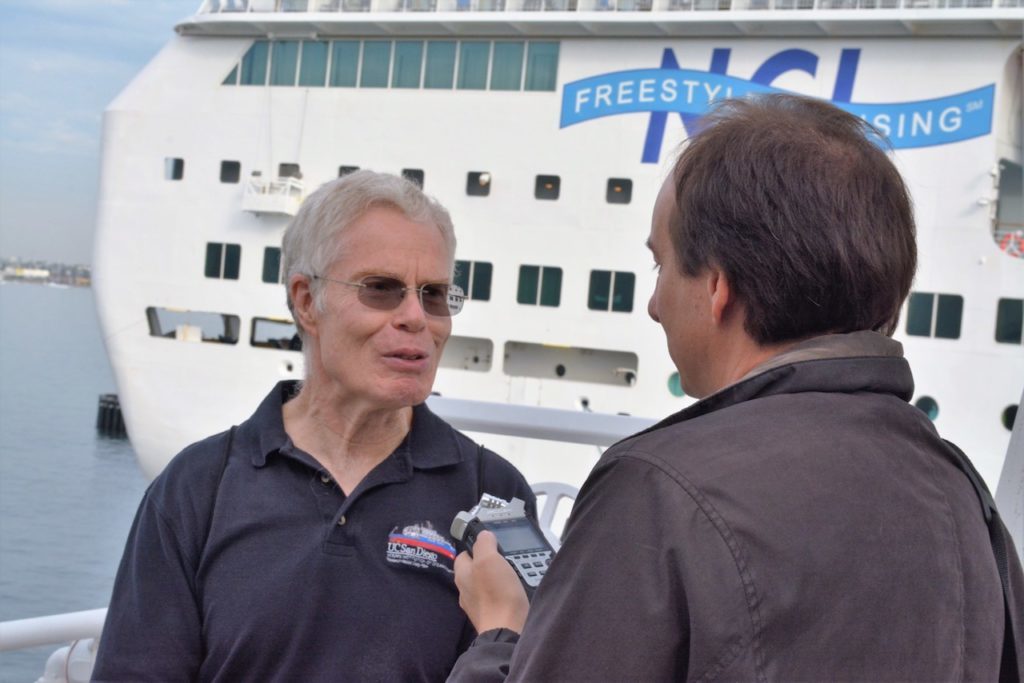
Han Solo is the favorite character of Jim Swift, a research oceanographer at SIO. As a physical oceanographer, he looks at aspects like temperature, salinity, and levels of gases like carbon dioxide, freons, and how they are changing on a long term time scale. He explained the importance of doing the research analysis at sea rather than simply bringing samples back to land, “We do everything we can on the ship while the samples are fresh and can be kept or re-collected if needed.” He compared the ships of Star Wars to the research ship. “Like a Star Destroyer or other large vessel, the R/V Sally Ride is a technological marvel on top of a mechanical marvel.” Although instead of the technology to subjugate rebellious worlds, Swift’s talking about the high-tech research functionality, on top of a ship that can take on missions for up to 40 days.
In charge of helping communicate the ship’s mission to the public is Melissa Miller, a marine chemist studying the properties of seawater and also the ship’s blogger and social media lead. She also helps curate exhibits at the Birch Aquarium at SIO on the ship’s current research expeditions. She shared her lifelong passion of Star Wars. “Star Wars definitely molded how I learned about good versus evil, intentions versus actions, and just how much a negative person who can’t control their emotions can mess up the universe. I remember having talks with my parents as I grew up and watched the movies over and over. Leia is a princess, but also a military officer, she’s sharp, but also gets to be vulnerable. ... But seriously, R2-D2 is the star. He is the only well-adjusted character, who knows what he’s feeling and communicates effectively (whether it’s beeps or teetering), and I respect that. And pretty much nothing would have gone right if not for Artoo. Think about it, he’s always ahead of the game and the go-to helper in a sticky situation.”
“The Force runs strong in your family. Pass on what you have learned.”

Back on the pier, I catch Cameron Freels, Second Officer, packing up some equipment. He’s in charge of the bridge electronics and navigation: “Course planning, transits -- making sure our route is safe and in the right direction.” As a Star Wars fan, he saw the whole mission of the research ship as akin to the saga: “When it comes to the spirit of the Sally Ride and the idea of exploration and getting out there and seeing the unknown, Star Wars is much like that: deep space and seeing new planets and different things. My favorite character is probably Yoda; a little inspiration there. The way he took Luke under his teaching, that’s what the Sally Ride is here for us: a platform for education for children and students. So being a part of that is pretty rad.”
“The circle is now complete.”
So why is an ocean research vessel named after an astronaut? Sally Ride, the first American woman in space, continues to inspire future generations of scientists and explorers. In addition to being an astronaut, she served as a member of the UC San Diego physics faculty and helped start KidSat, now called EarthKAM, a program that allows middle school students to request digital camera pictures to be taken from the space shuttles and International Space Station. R/V Sally Ride will also foster ocean exploration through satellite telepresence connecting schools with scientists onboard, including through Sally Ride Science, another program started by the late astronaut, now run by UC San Diego that encourages learning and careers in the STEM (Science, Technology, Engineering, and Math). With this legacy in mind, it seemed natural to honor a national hero with a strong connection to the San Diego-based university’s oceanographic research center. And to help connect the mission of Sally Ride, the person, with Sally Ride, the research vessel, astronauts Jessica Meir and Megan McArthur spoke at the commissioning. I had a chance to interview them and learn their Star Wars stories.
Megan McArthur is a NASA civilian astronaut, with a PhD in Oceanography from Scripps Institution of Oceanography in 2002, specializing in underwater acoustics. While on a space shuttle mission, McArthur was the last person to touch the Hubble Space Telescope, having controlled the robotic arm for the telescope’s final servicing. She describes seeing Star Wars as a kid: “I was five when it came out. My dad took my sisters and I to see it. We loved it and went when all the subsequent movies came out. We’re all explorers at heart and there is some of that in Star Wars. Thinking about a time when there are lots of people living in space, but hopefully not in a war footing, and traveling interplanetary -- that’s a seed that gets planted when you’re pretty young, watching stories like Star Wars.”
Jessica Meir is from the most recent class of NASA astronauts, also as a civilian, and has a PhD in Marine Biology from Scripps Institution of Oceanography in 2009, studying the diving physiology of marine mammals and birds. She explained that, at NASA, everyone identifies as either a Star Wars or a Star Trek fan, and she always answers, “I’m definitely Star Wars.” Meir adds, “They are iconic movies about explorations and dreaming a little bit -- just really cool movies.” Meir discussed her and McArthur’s role in preparing the next generation of explorers: “We both had careers in STEM fields as scientists before we became astronauts. It’s important to keep ensuring that people, especially kids, are interested in science, technology, engineering and math. It is something that we care a lot about. A big part of our job is to do a lot of outreach including going into schools and talking to kids of all ages and showing them different options of career paths.”
McArthur added, “I think something that is sometimes misunderstood by people is that science and engineering is not just technical, but also engages the creative side of your brain. Engineering is really all about problem solving and creativity is a huge part of that. It’s not something that is separate from the creative world. People collaborate and work together, bringing all their skills together to solve interesting problems like how to live and work in space or explore the oceans.”
So while these NASA astronauts and the researchers and crew of the R/V Sally Ride can draw on their enjoyment of the galaxy far, far away to help them explore new frontiers and encourage young scientists, we all can draw on them as inspiration to make sure we’re ready to tackle the challenges facing our world, using the Force for knowledge. Commence primary ignition, R/V Sally Ride!
James Floyd is a writer, photographer, and organizer of puzzle adventures. He’s a bit tall for a Jawa. His current project is Wear Star Wars Every Day, a fundraising effort for a refugee aid organization. You can follow him on Twitter at @jamesjawa or check out his articles on Club Jade and Big Shiny Robot.
Related Stories
-
![Interview: Kjell Lindgren of NASA]()
February 23, 2015
February 23, 2015
Feb 23
-
![Andor Costume Designer and Emmy Nominee Michael Wilkinson Weaves Character into the Fabric of Season 2]() [object Object] [object Object]
[object Object] [object Object]Andor Costume Designer and Emmy Nominee Michael Wilkinson Weaves Character into the Fabric of Season 2
July 16, 2025
July 16, 2025
Jul 16
-
![Introducing the Cast of Andor Season 2]()
May 14, 2025
May 14, 2025
May 14
-
![Genevieve O’Reilly on That Speech and Mon Mothma’s Other Biggest Moments from Andor Season 2]() [object Object] [object Object]
[object Object] [object Object]Genevieve O’Reilly on That Speech and Mon Mothma’s Other Biggest Moments from Andor Season 2
May 8, 2025
May 8, 2025
May 8
-
![Anakin Skywalker Himself Hayden Christensen Reflects on 20 Years of Star Wars: Revenge of the Sith]() [object Object] [object Object]
[object Object] [object Object]Anakin Skywalker Himself Hayden Christensen Reflects on 20 Years of Star Wars: Revenge of the Sith
April 29, 2025
April 29, 2025
Apr 29
-
![Andor Star Diego Luna Reflects on Cassian’s Journey]()
April 24, 2025
April 24, 2025
Apr 24
-
![Star Wars Goes to the Grammys]()
January 31, 2025
January 31, 2025
Jan 31
-
![Bringing the Towering “Tet’niss” from Star Wars: Skeleton Crew to Life]() [object Object] [object Object]
[object Object] [object Object]Bringing the Towering “Tet’niss” from Star Wars: Skeleton Crew to Life
January 2, 2025
January 2, 2025
Jan 2




